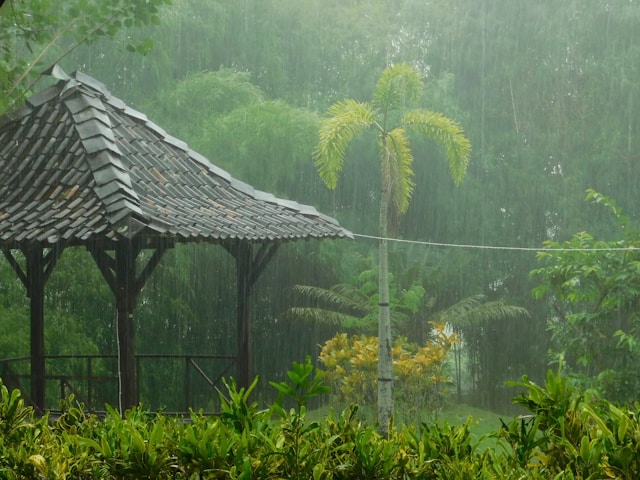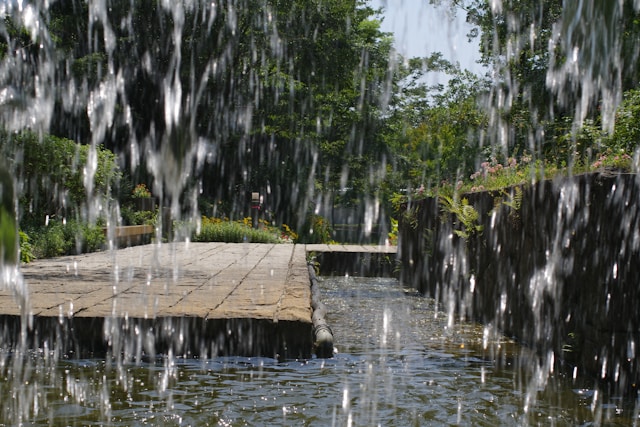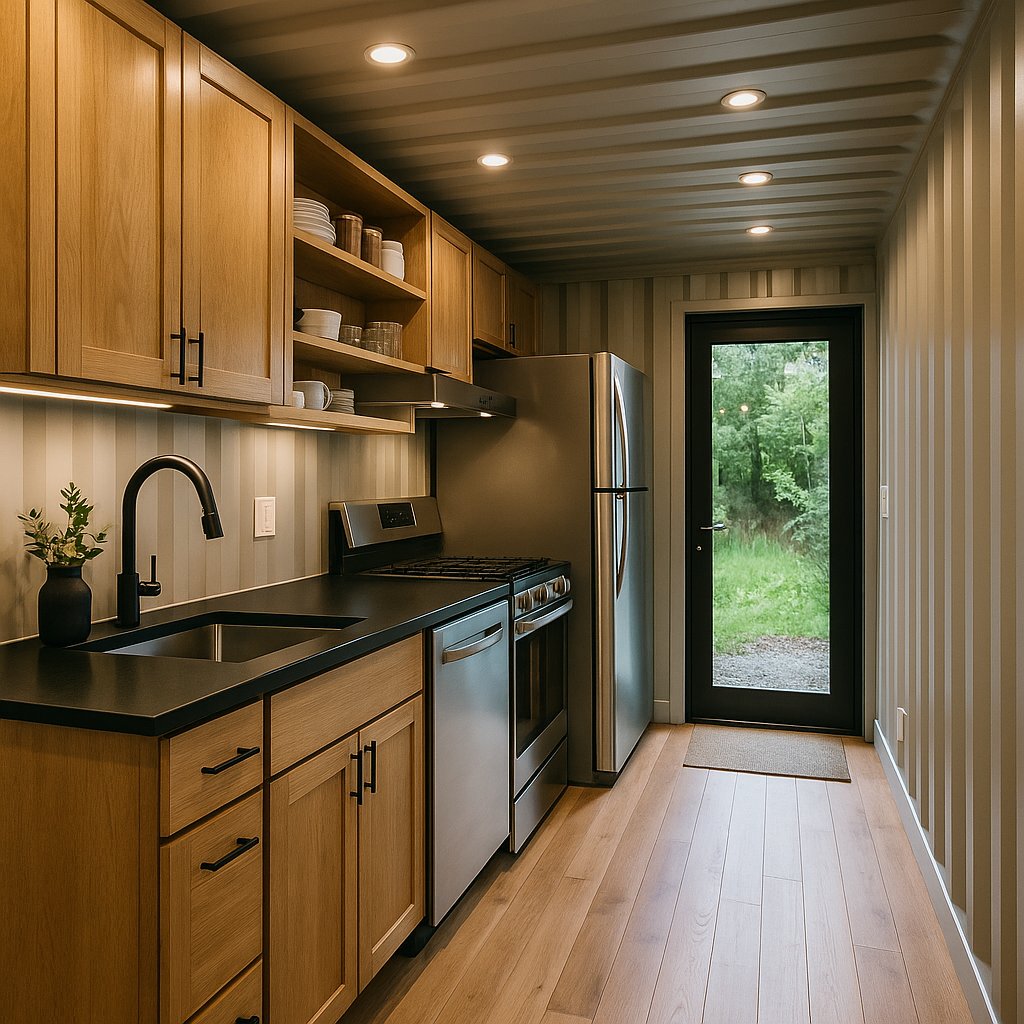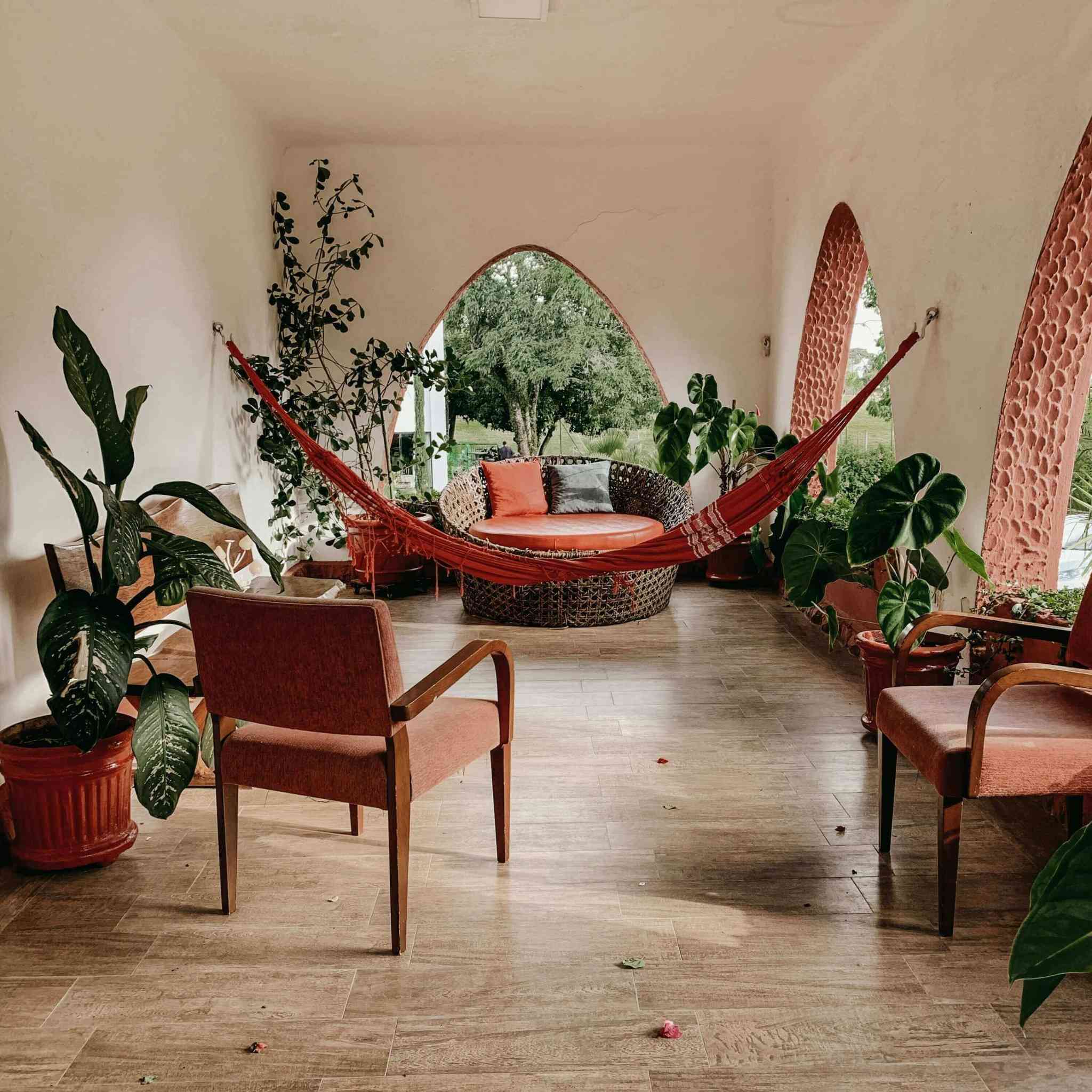Introduction: Water that Falls from the Sky Can Be Worth Gold
Imagine turning something as simple and common as rain into an elegant, efficient, and eco-friendly solution for your everyday life. That’s the beauty of harvesting rainwater: transforming a natural element into something functional, decorative, and deeply sustainable.

With water bills rising and environmental awareness growing, capturing rainwater has become more than just a green initiative — it’s a lifestyle upgrade. If you already love home design with purpose, or if you’re just getting curious about eco-conscious architecture, this article is your invitation to see your roof not just as shelter, but as the first step toward getting water for free.
Because yes — rain is free water, and it’s time we used it wisely.
Why Should You Harvest Rainwater?
Water is a precious resource. But in many parts of North America, it’s often taken for granted — until a drought, a water restriction, or a shockingly high bill lands on your doorstep. Collecting rainwater isn’t just about saving money (though that’s a great perk); it’s about building resilience, embracing sustainability, and creating smarter homes.
With the right system, you can use rainwater for:
- Irrigating gardens and lawns
- Washing cars and outdoor areas
- Flushing toilets
- Washing clothes
- And in some cases, even for filtered indoor use
Across cities in the U.S. and Canada, municipalities are increasingly recognizing these benefits. Some areas even offer rebates or tax incentives for installing rainwater collection systems, especially when paired with eco-landscaping or energy-efficient upgrades.
More than ever, homes that align with eco-consciousness and elegance stand out in the market — and rainwater harvesting plays right into that.
How Does a Rainwater Harvesting System Work?
A rainwater harvesting system is surprisingly simple, and it can be as basic or advanced as your home requires. Let’s walk through its components and function:
From Roof to Reservoir: The Journey of Water
Rain falls on your roof, flows into your gutters, and is directed down through downspouts into a storage tank or cistern. The size of your roof and the amount of rainfall you receive determine how much water you can collect.
In cities like Seattle, Vancouver, or Austin, where rainfall is frequent, even a modest system can fill a 1,000-gallon tank in a week.
Filtration, Storage, and Reuse
Before storing the water, debris like leaves or dirt is filtered out using screens or leaf catchers. Some systems also include first flush diverters that discard the initial runoff — which may contain roof contaminants — and collect only cleaner water afterward.
Depending on your setup, the stored water can be used directly (non-potable uses) or filtered and treated for indoor uses like laundry or toilets. In off-grid homes or eco-builds, advanced filtration allows for safe potable use as well.
Tailored Solutions for Every Home
Whether you’re in a suburban bungalow, a rural homestead, or a modern urban townhouse, there’s a system for you. In fact, modular rain barrels that hook up to a garden hose start under $200 and are perfect for beginners.
More advanced systems can be integrated seamlessly into new constructions or retrofitted to existing homes — proving that free water is for everyone, regardless of budget or square footage.
Direct Benefits for North American Homes
Let’s be honest — one of the first things people ask is: Will it save me money? And the answer is: absolutely, especially if you water your lawn regularly or live in areas with high water rates.
In fact, lawn irrigation alone can account for up to 60% of summer water bills in some U.S. states.
But the benefits go beyond cost savings. Here’s what a rainwater system brings to your home:
- Resilience during droughts and dry seasons
- Lower municipal water usage and bills
- Eligibility for green home certifications like LEED or Net-Zero
- Higher property value and buyer appeal
- Lower environmental impact — great for your conscience and curb appeal
Table 1: Average Outdoor Water Use per Household (U.S.)
| Use Case | Without Rain System | With Rain System | Savings Potential |
|---|---|---|---|
| Lawn Irrigation | 10,000 gal/month | 2,500 gal/month | 75% |
| Car Washing | 200 gal/week | 50 gal/week | 75% |
| Pressure Washing Deck | 500 gal/week | 100 gal/week | 80% |
These numbers vary depending on the season and region — but one thing is certain: collecting rainwater means you’re using water smarter.
Architectural Elegance Meets Sustainability
As a designer, I often hear, “Won’t a big water tank ruin the look of my home?” And I get it — no one wants a giant plastic barrel messing with their curb appeal. But thankfully, today’s systems offer elegance that matches modern architecture.
Integrating Tanks into Landscaping
Modern cisterns come in beautiful forms: slim-line tanks that fit alongside a fence, underground units hidden beneath garden paths, and even decorative barrels disguised as planter pots.
In backyard patios, we often build wooden enclosures with bench seating or trellis walls around tanks — adding beauty and function in one move.
Designer Gutters and Downspouts
Gutters don’t need to be dull aluminum tubes. Many high-end homes now feature copper, black matte, or custom-painted gutters that enhance the facade. Downspouts can double as sculptural elements — adding vertical rhythm or sleek contrasts to minimalist walls.

Concealed or Smart Systems for Clean Aesthetics
If you’re after a minimal, invisible look, go underground. Systems can include below-grade storage with digital pumps, filters, and Wi-Fi monitoring. You’ll get full functionality without ever seeing a hose or tank.
In short: you don’t need to compromise beauty for sustainability — you can have both.
What Does the Law Say?
In many U.S. states and Canadian provinces, rainwater harvesting is not only legal — it’s encouraged. However, regulations vary by region.
For example:
- Colorado allows rain barrel use up to 110 gallons per home
- Texas, Arizona, and California offer tax incentives or rebates
- British Columbia and Ontario support harvesting for graywater systems in green buildings
Always check with your local municipality or building department before installing a system. Some cities may require permits, backflow prevention devices, or approved filtration methods.
Real-Life Projects and Inspirations
Here are two real examples I’ve worked on recently:
Modern Townhome in Portland, OR
A 1,200-gallon underground cistern supplies water for flushing toilets and irrigating a pollinator-friendly native garden. The homeowners qualified for a city rebate and earned LEED points — all while keeping their backyard pristine and cozy.
Country Home in Ontario, Canada
On a property that sees heavy snowfall and spring rains, we built a dual-system: rooftop snowmelt collection and summer rain capture. The water supplies a greenhouse and outdoor kitchen — marrying sustainability with rural charm.
These projects show that rainwater can be beautiful, effective, and tailored to any climate.
Getting Started: Practical Steps for Beginners
You don’t need to be a contractor or architect to start saving rain. Here’s how you can get going today:
Checklist: Building Your First Rainwater Collection System
- Measure your roof area and estimate rainfall (check local averages)
- Install high-quality gutters and downspouts
- Add a leaf screen or debris filter
- Choose a rain barrel or tank (start with 50–500 gallons)
- Position near a garden or outdoor tap
- Elevate the barrel for better water pressure
- Empty and clean before winter (in cold regions)
- Track your savings — it’s rewarding!
You can start with something as simple as a $100 barrel and a hose, then upgrade later with pumps, underground tanks, or filtration if needed.
Table 2: Rain System Options and Average Costs (U.S./Canada)
| System Type | Capacity | Ideal For | Approx. Cost (USD/CAD) |
|---|---|---|---|
| DIY Rain Barrel | 50–100 gal | Garden use, beginners | $100–$300 |
| Basic Above-Ground Tank | 300–1,000 gal | Lawn, outdoor cleaning | $500–$1,500 |
| Underground Cistern System | 1,000–5,000+ | Whole-house or off-grid | $3,000–$15,000+ |
| Smart System w/ Automation | Customizable | High-tech homes | $10,000–$30,000 |
Prices vary depending on brand, labor, and region. But even basic systems can offer great value — and the satisfaction of using nature’s gift wisely.
Conclusion: Let the Sky Water Your Home
In a world where resources are becoming more precious, free water falling from the sky is a blessing we can no longer ignore. Rainwater harvesting blends function, design, and ethics — and offers a simple yet powerful way to make your home smarter and more self-sufficient.
It’s not just about saving money. It’s about living in tune with your environment, designing with intention, and turning every drop into purpose.
So whether you’re a homeowner in the Pacific Northwest, a homesteader in Alberta, or a designer planning your next green build — take this as your cue.
Look up, collect, and create.
Because every raindrop can be part of something beautiful.




